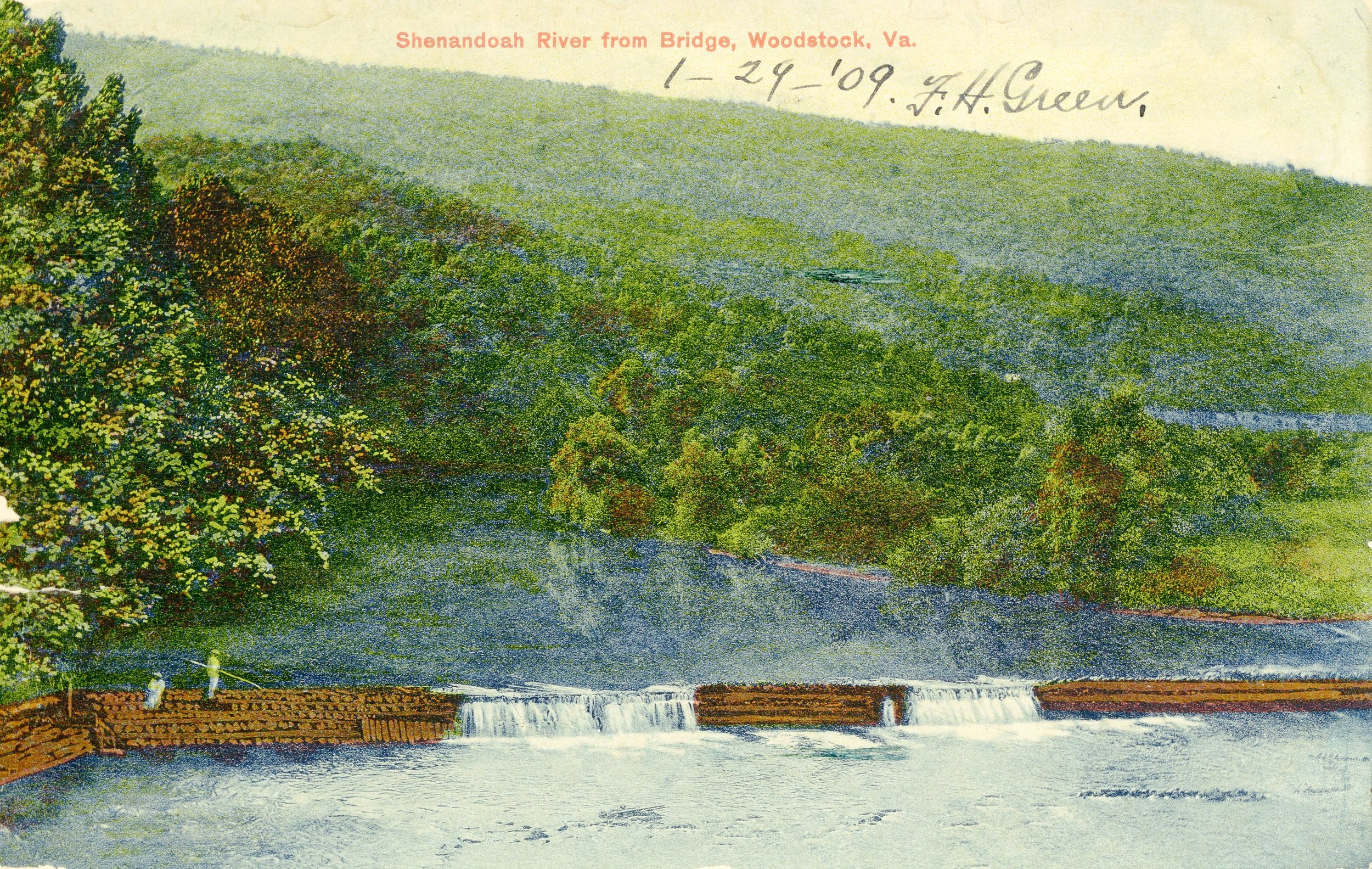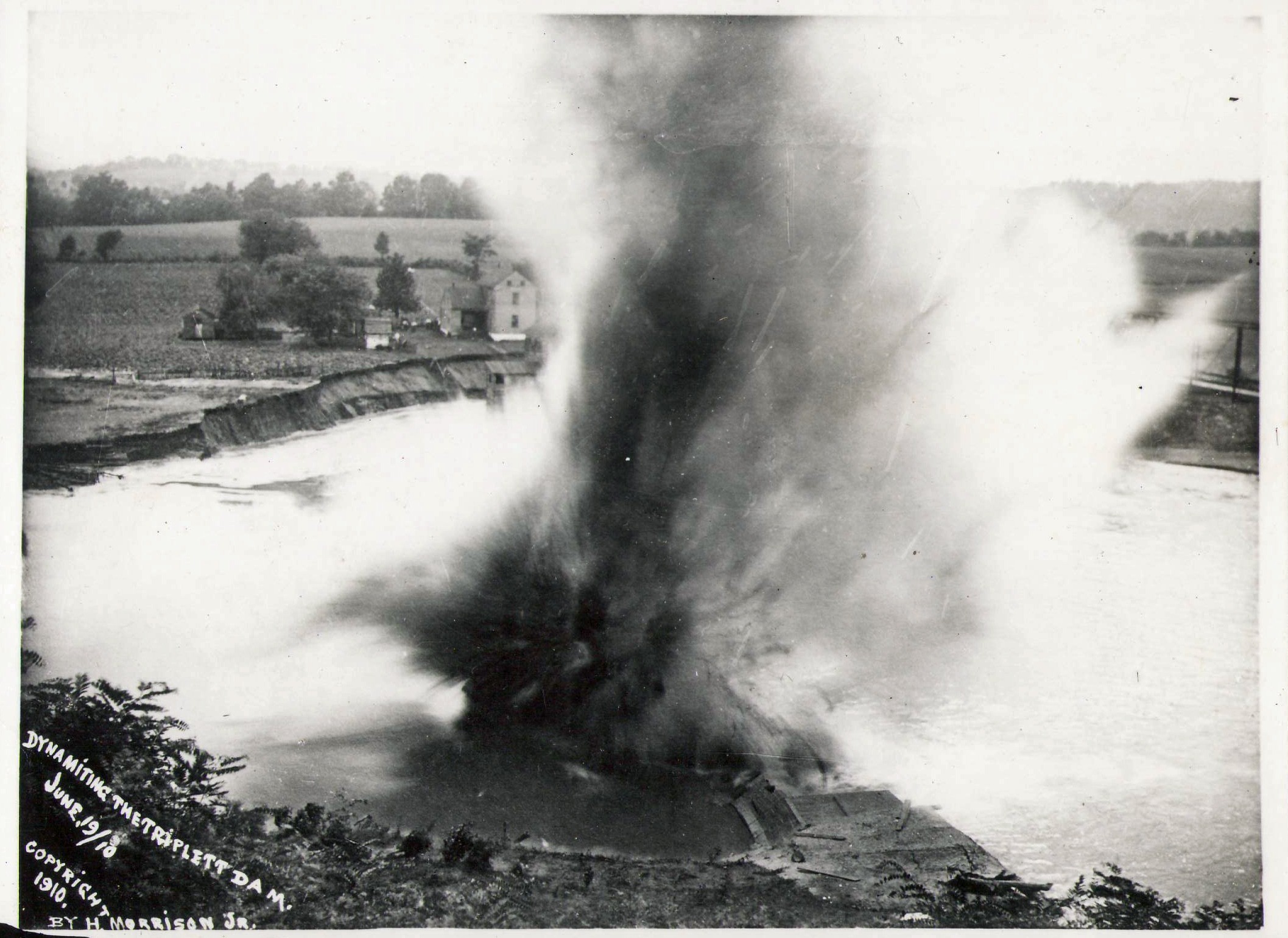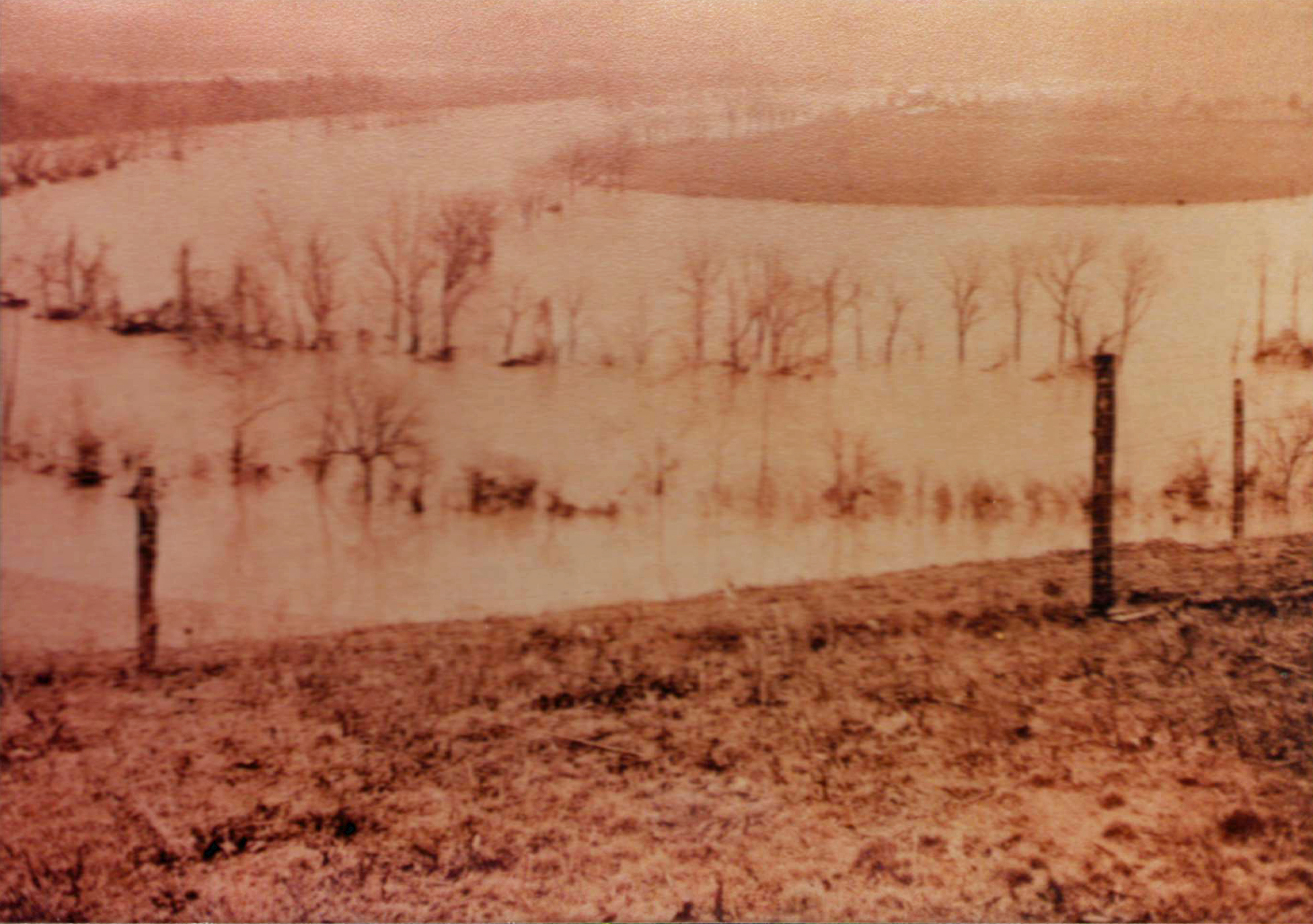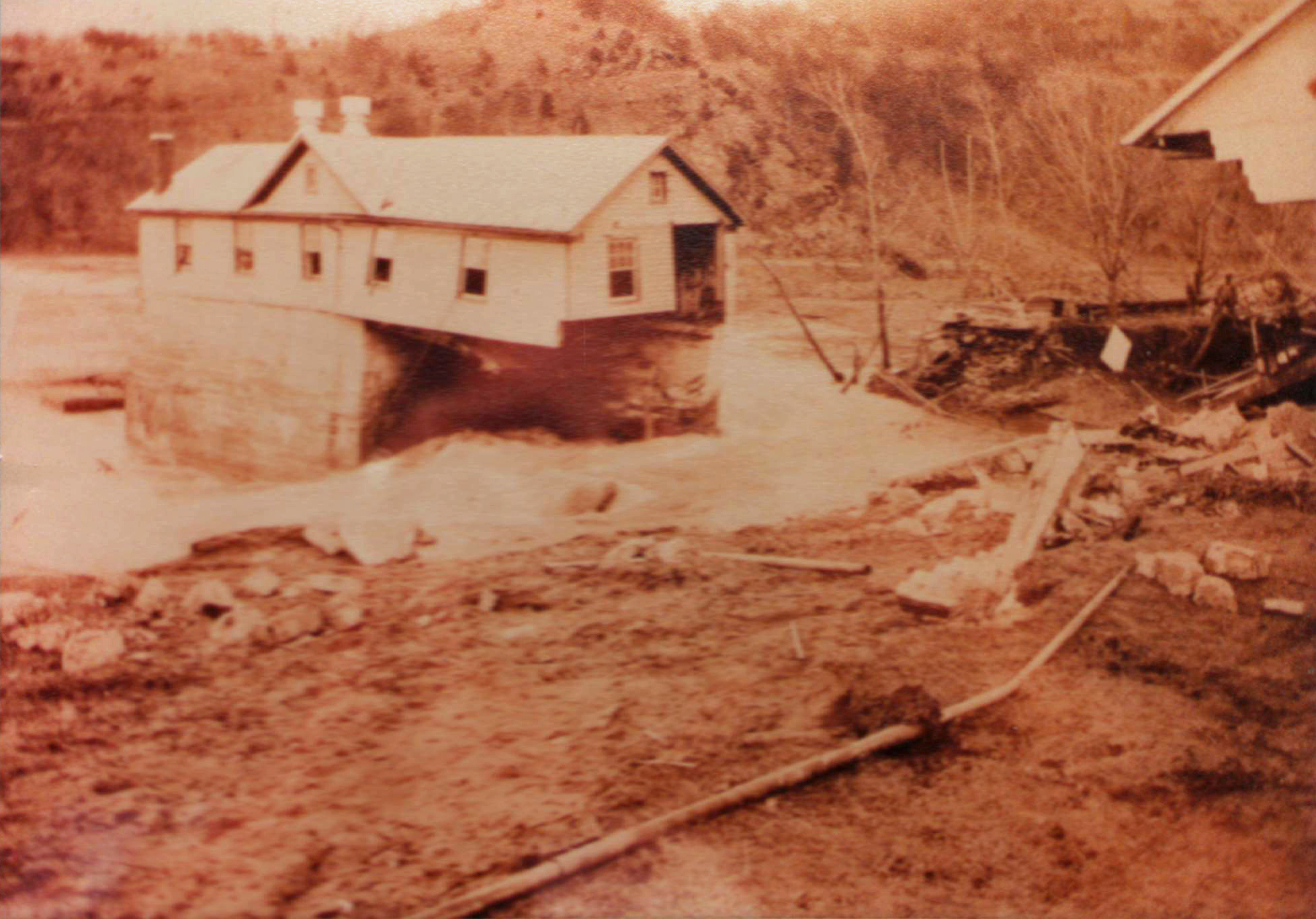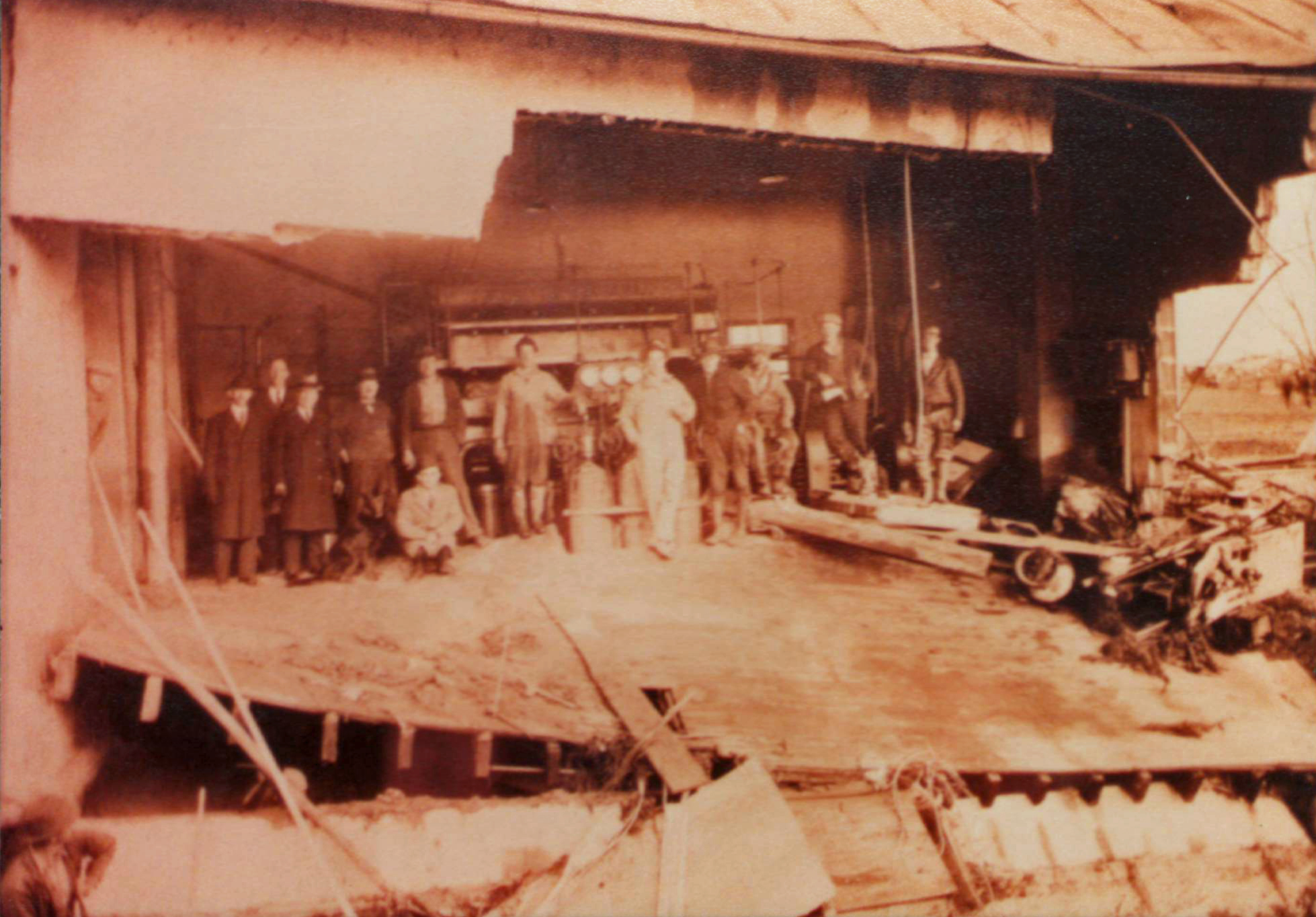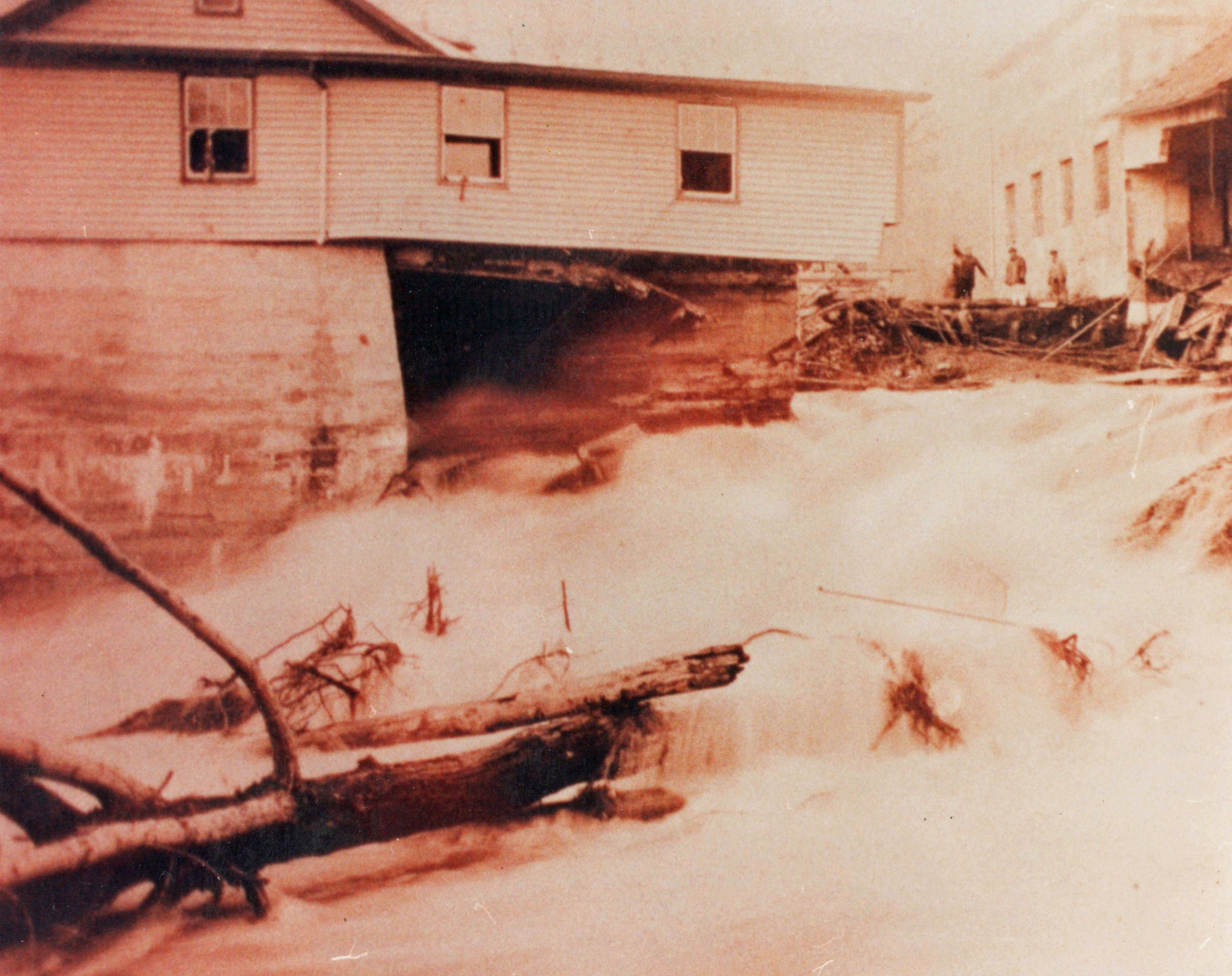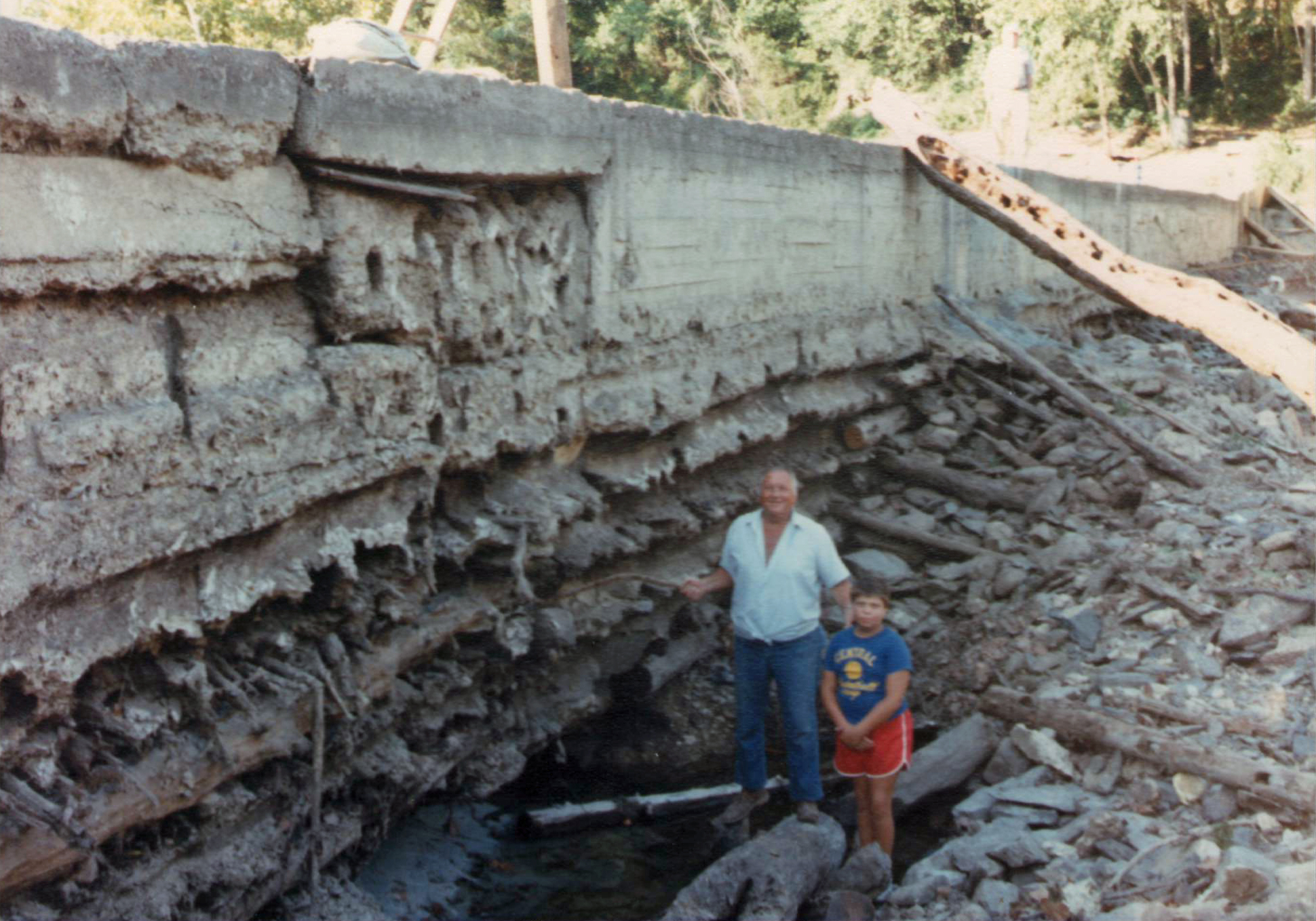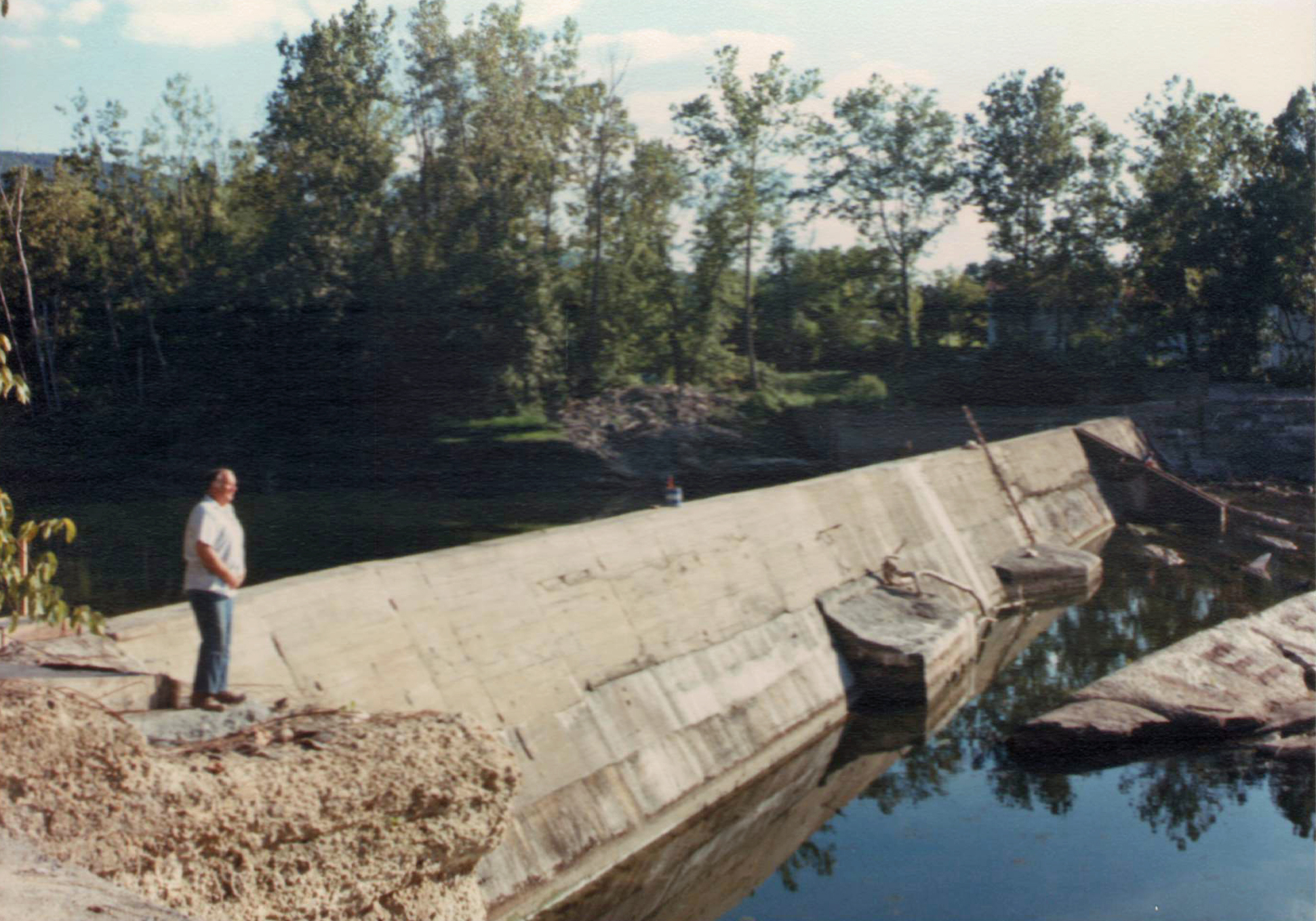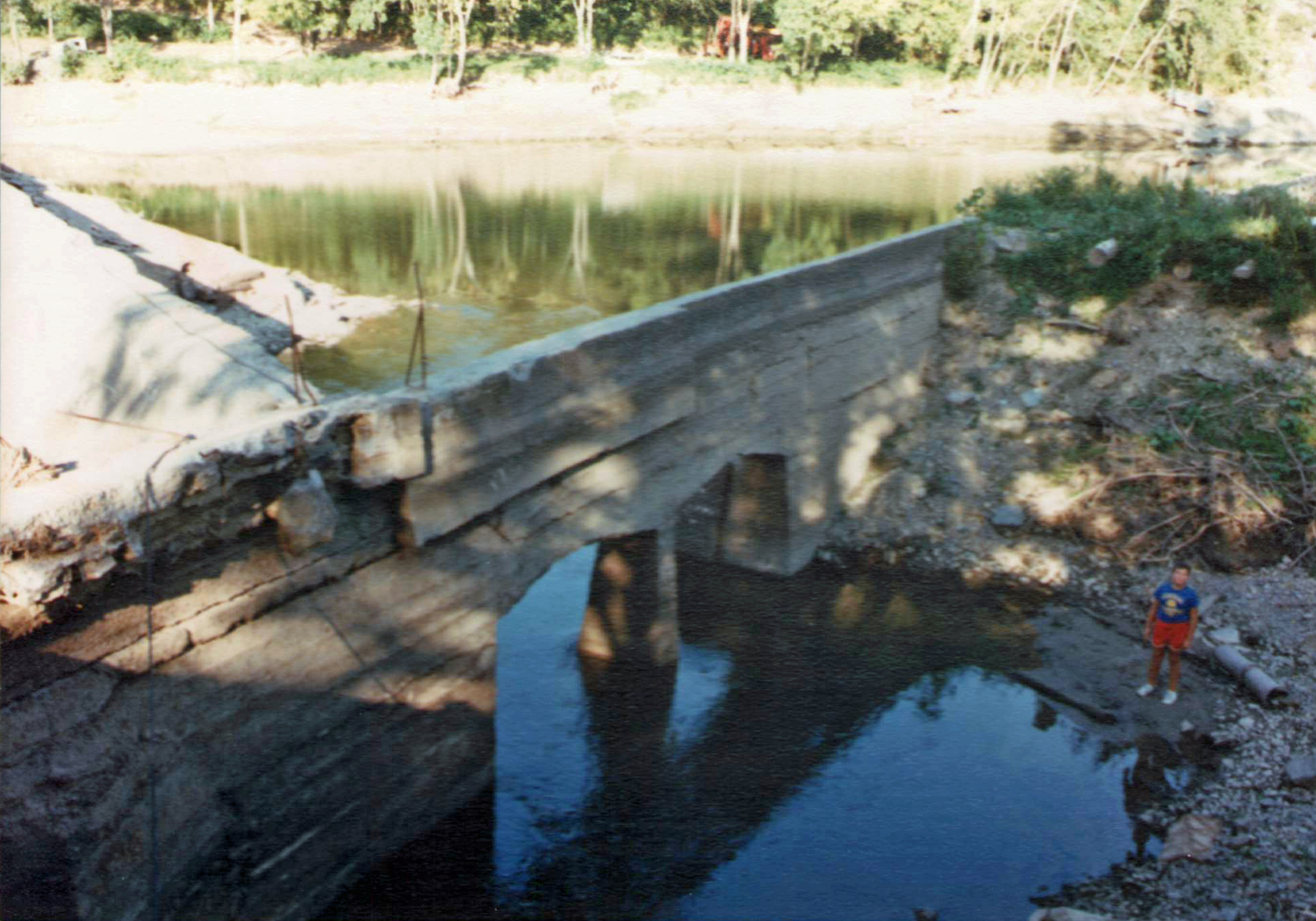Historical Pictures
Old Rush's Mill, Triplett Dam, Burnshire Dam, the list of names for this historic structure all carry a history as rich as its own. The first mill at this site may date back to the very early 1800's when only a 8 foot deep pond was created using timber cribbing. The original dam was used to supply power to a grist mill that would eventually become the sole source of power for the town of Woodstock. Eventually encased in concrete, and then heightened to 13 feet, this dam still stands the testament of time and retains useful purpose.
Timeline of Events
1873
Dr. J. I. Triplett purchases Old Rush's Mill, a grist mill, along one of the seven bends of the Shenandoah River. This location was a popular river ford crossing point from Massanutten Mountain to the east and the country seat in Woodstock.
1892
Starting in the early 1890s, Dr. Triplett began to turn the grist mill into the first source of electric power for the town of Woodstock. A franchise for the electric company was granted to Triplett in 1901.
1903
The first electric light was supplied to the Woodstock street lamps in late 1903. The lights were describe as "entirely satisfactory" and in the following year were expanded to the county buildings.
1924
After a large flood, the turbines at Triplett's dam are replaced with three Leffel units. This is likely when the original powerhouse was destroyed, and now all that remains is the foundation along the dam.
1936
One of the worst floods in the history of the area completely islands the powerhouse from the shore. The entire wood structure of the powerhouse was eventually replaced with concrete block and the building height was increased to be two stories.
1956
Now called Burnshire Dam, after the family that operated the site. The property is purchased by VEPCO (now Dominion Power) and shut down three days later. Two generations of Burnshire family had operated the power plant 24/7/365 for over 30 years. One Burnshire brother is offered a job as a lineman for Dominion; the other retires to work at the local grocery store.
1979
The Public Utility Regulatory Policies Act (PURPA) is enacted in 1978 in response to the 1973 energy crisis to promote energy conservation and greater use of domestic energy and renewable energy. Burnshire Dam is purchased with the intent of generating hydroelectric power once again. The renovation takes several years and includes extensive repairs to the dam. During this time several devastating floods strike.
1992
Burnshire is once again shut down after the owner could no longer maintain the facilities. The property becomes a popular fishing spot as the North Fork is known for its fly fishing.
2012
In early 2012, Burnshire is purchased by Lee Harvey with the intent to salvage the historic site and generate clean power. After sitting idle for 20 years, there was considerable debris and decay but the turbines were still there waiting to spin again. One of the turbine runners (the propeller that spins with water flow) was being used as a mailbox post!
Key Historical Photos
Circa 1930
This picture shows the dam after the 1924 flood which destroyed the first powerhouse (foundation in the foreground), but before the 1936 flood which destroyed the wooden powerhouse.
In this photo there is only one diesel generator building. Secondary diesel generators were added when the demand for power surpassed the supply available from Burnshire as power was increasingly sold to private homes starting in the 1920s.
Also present in this photo to the right of the powerhouse, behind trees, is the home where the Burnshire family lived. Adam Burnshire worked the dam until his two sons took over. Two generations of Burnshire men operated the power plant for over thirty years.
circa 1940
This picture shows repairs after the 1936 flood cut a channel around the powerhouse. The wooden powerhouse here was eventually replaced with a two story reinforced block structure.
To the right, two homes were built as housing for the Burnshire brothers who operated the plant 24/7. A Burnshire grandson recalled his father jumping up from the dinner table when he heard the whine of the turbines change pitch. We cannot validate this lore; the turbines are fairly quiet and unnoticeable from outside the building. Maybe the lights dimmed...
During WWII there was a brief fear the dam would be a target for German bombers so a few marines were stationed at the dam. This fear was quickly abandoned.
